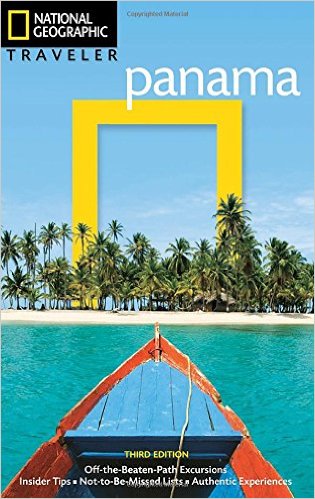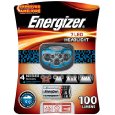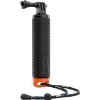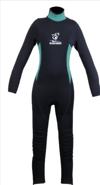Connecting two continents, this small but mighty Central American nation is bisected by the famous Panama Canal, one of the world’s great engineering feats. Popular with tourists for its diversity, Panama features quaint highland towns alongside some of the region’s most untouched jungles.
At times ultramodern and at times refreshingly historic, the Miami-esque feel of Panama City juxtaposes wonderfully with flourishing indigenous populations which inhabit postcard-worthy islands anchored in the clear Caribbean Sea. Whether you’re more of a shopper or an adventurer, an athlete or an admirer, you’ll find your happy place in Panama.
Most tourists visit Panama from December to April. This high season coincides with the dry season for Pacific Coast, including Panama City, and is a time when there is little rain anywhere south of the continental divide. Holidays are particularly busy. The rest of the year is low season for tourism, and also rainy season for much of the country.
From April to July, much of the day is still nice, but short, heavy thunderstorms often occur in the afternoons. Humidity is always high in Panama and the Caribbean coast generally receives twice as much rain annually than the Pacific coast. However, rain is sporadic and varies from region to region, so it is quite possible to have a good vacation during low season, depending on the destination.
The Caribbean destination of Bocas del Toro is driest in September, October, February and March, while the popular mountain town of Boquete experiences high winds and misty rain from mid-December to February and is sunniest from March to May. Temperatures in the country are nearly constant, ranging from a pleasant 24°C-29°C in most of the country while dipping down to a cooler 16°C in the Chiriquí Highlands, which have a variety of microclimates prone to drastic changes.
High Season
December — April
Average temperature
88-75 °F
31–24 °C
Average number of rainy days 2-10
Low Season
April — December
Average temperature
88-77 °F
31–25 °C
Average number of rainy days 12–15
Average temperature
Average number of rainy days
The following links are affiliate links to Amazon.com or other local Amazon web stores - it depends on your location. The listed prices of all items are the US Amazon store prices at the time of publishing. If you are visiting us from outside the USA and there is an analogous item in your local Amazon web store, you'll be redirected there automatically. We do our best to keep all prices and descriptions up to date, but if you find any errors or inaccuracies, don't hesitate to contact us using our feedback page!
Recommended Travel Guides4
City walking10 items
Panama City is a city-walking paradise. Its old town neighborhood, Casco Viejo, has an irreplicable charm while its downtown and financial district have the feel of a Pacific coast Miami. A large section of the city is dedicated to very old ruins - a fascinating place to explore during the daytime, but a bit sketchy at dusk. Panama City even boasts its own national park called the Metropolitan National Park, which offers some great and easy trails as well as a gorgeous hilltop view of the cityscape. And of course, watching the gigantic barges heading through the Panama Canal is a great way to pass the time.
While Panama City eclipses many of the country’s other cities, Colon, Bocas Town, and Boquete are also quaint destination for the city-bound explorer. Regardless of where you go, remember to bring sunscreen (and, if you’re visiting during low season, an umbrella).
-
Good daypack
-
Sunglasses
-
Face sunblock
-
Body sunblock
-
Hats
-
Camera (portraits and city views)
-
Portable battery charger (for your phone and camera)
-
Facial cleansing wipes
-
Hand wipes
-
Travel umbrella
Beaching9 items
With two coasts and a plethora of offshore islands, Panama has some of the region’s best beaches. The Pacific beaches of Taboga Island, a volcanic island known as the Island of Flowers, are popular because they make an easy and beautiful day trip from Panama City.
The San Blas Islands are an idyllic getaway in the Caribbean. Accommodations range from comfortable to rustic, and as the islands are populated by indigenous Kuna homes and little else, it’s a chance to escape nightclubs and party beaches and experience true island life on your own small, palm-tree-dotted slice of paradise. There are a variety of all-inclusive tour packages that you can buy in Panama City to stay on one or more of the San Blas Islands, but be prepared - it’s good to bring your own water, snacks, and even food if you have special dietary requirements. Sunscreen is a necessity, but many transportation options only allow you to bring one bag that is on the smaller side, so it’s essential to pack efficiently. The trip is about 4 hours from Panama City through mountainous terrain, and then usually at least 45 minutes more by boat.
Those more excited about nightlife should head north to Bocas del Toro, a group of Caribbean-side islands close to the border with Costa Rica. Each island is boasts its own activities, but some of the highlights include fantastic seafood and swimming on a starfish-studded beach. Wherever you go in Panama, it’s important to remember to bring sunscreen and a hat, as the sun can be particularly brutal.
-
Body sunblock
-
Face sunblock
-
Sun oil
-
After sun care
-
Moisturizing spray
-
Sunglasses
-
Hats
-
Hand wipes
-
UV protection shirts
 O'Neill UV Sun Protection Men's Basic Skins Long Sleeve Crew Rashguard$24.14
O'Neill UV Sun Protection Men's Basic Skins Long Sleeve Crew Rashguard$24.14 O'Neill UV Sun Protection Men's Basic Skins Tee Rashguard$24.95
O'Neill UV Sun Protection Men's Basic Skins Tee Rashguard$24.95 O'Neill UV Sun Protection Women's Basic Skins Long-Sleeve Rashguard Top$17.96
O'Neill UV Sun Protection Women's Basic Skins Long-Sleeve Rashguard Top$17.96 O'Neill UV Sun Protection Women's Basic Skins Short-Sleeve Crew Rashguard Top$17.99
O'Neill UV Sun Protection Women's Basic Skins Short-Sleeve Crew Rashguard Top$17.99 Speedo Kid's UV Long Sleeve Sun Shirt$18.95
Speedo Kid's UV Long Sleeve Sun Shirt$18.95
Jungle trekking24 items
The most dedicated jungle trekkers will usually embark for the challenging trails of the Darién Gap home to the most remote wilderness in Central America. The Darién Gap is the large swath of pristine jungle which connects Panama to Colombia. Notoriously untamed, it is some of the wildest wilderness on the continent.
For a slightly less remote experience, birdwatchers and wildlife enthusiasts often head to Pipeline Road in Soberanía National Park, where it’s recommended to head out before 9:00 AM in order to see the most animals.
Additionally, don’t forget that the rainforest is a huge ecosystem and every creature, even if it’s very tiny, can protect itself well! For example, leeches are not something you’d want to mess with. While leeches are not the absolute worst experience you could have, they’re still highly unpleasant.
Also, your typical hiking boots are not the best option in the tropical rainforest due its very high humidity. Since normal hiking boots are made of leather, some organisms could find them attractive and move in there. If this happens, then after only a few days of trekking, you’ll basically need to throw them away. When I was preparing for my first jungle experience, I searched far and wide to find the type of boots which would be the best for me. Then, I recalled that the US army had created jungle boots specifically for its soldiers when there was a war in Vietnam. I googled this and ended up buying a pair of these boots. After I did few treks in them, I realized that I had made a very smart choice. The boots are made with an artificial fabric and materials which get dry much quicker than normal hiking boots (which is ideal, considering humidity). They also have very good ankle support and they are tall, so you can wear your leech socks and you won’t be afraid of getting bitten. But of course, light trekking boots with synthetic material would be also a good option, especially if the trek is short.
Other items mentioned below are also musts for jungle trekking. Garbage bags, for example, could be very useful when you have a boat ride somewhere in the depths of the jungle, or if you go during the rainy season. If you put all your bags in separate garbage bags and seal them with a sealing tape, it keeps them from getting wet if it’s raining. I usually use 2-3 garbage bags for each of my bags - a solution which costs much less than a raincover for your bags. Additionally, considering how heavy the rain in the jungles can be, a raincover won’t really help you at all!
-
Good daypack
-
Waterproof bag (might be even better option for rainy season)
-
Anti leech socks (extremely important for rainy season)
-
Jungle boots
-
Light hiking boots
-
Long hiking pants
-
Jungle rain poncho
-
Waterproof bags for camera and documents
-
Good binocular
-
Whistle
-
Torch and headlamp
-
Extra torch batteries
-
Lighter
-
Jungle knife
-
Sealing tape
-
Plastic bags
-
Rope
-
Adjustment to vertical peeing for girls
-
GoPro camera
-
Insect head hat
-
High DEET insect repellent
-
Antiseptic wipes
-
Universal injury relief ointment
-
Waterproof bandage
Mount hiking21 items
Some truly adventurous souls have crossed the entire Gap on foot, but this is considered somewhat dangerous and it’s best to do smaller, always guided hikes. For example, mountain lovers will enjoy summiting Pirre Mountain in Darién National Park, a moderately difficult trek made worthwhile by the untouched jungles around you.
Hikers are trekkers are also drawn to the pleasant mountain town of Boquete like magnet. It’s possible to hike through volcano-studded tropical and cloud forests near this mystical town, with a favorite hike being the Quetzal Trail in Volcán Barú National Park. Another hilly destination is La Amistad International Park, a jointly-governed park bridging the Panama-Costa Rica border, which has hikes ranging from 15 minutes to a few hours through waterfalls and thick jungles. The most adventurous hikers can even view both of Panama’s coasts from the top of a narrow trail here on a good day.
Additionally, don’t forget that the rainforest is a huge ecosystem and every creature, even if it’s very tiny, can protect itself well! For example, leeches are not something you’d want to mess with. While leeches are not the absolute worst experience you could have, they’re still highly unpleasant.
Also, your typical hiking boots are not the best option in the tropical rainforest due its very high humidity. Since normal hiking boots are made of leather, some organisms could find them attractive and move in there. If this happens, then after only a few days of trekking, you’ll basically need to throw them away. When I was preparing for my first jungle experience, I searched far and wide to find the type of boots which would be the best for me. Then, I recalled that the US army had created jungle boots specifically for its soldiers when there was a war in Vietnam. I googled this and ended up buying a pair of these boots. After I did few treks in them, I realized that I had made a very smart choice. The boots are made with an artificial fabric and materials which get dry much quicker than normal hiking boots (which is ideal, considering humidity). They also have very good ankle support and they are tall, so you can wear your leech socks and you won’t be afraid of getting bitten. But of course, light trekking boots with synthetic material would be also a good option, especially if the trek is short.
-
Good daypack
-
Good hiking boots
-
Jungle boots
-
Long hiking pants
-
Long sleeve shirt
-
Trekking socks
-
Jungle rain poncho
-
Torch and headlamp
-
Extra torch batteries
-
Softshell jacket
-
Anti leech socks (if rain season)
-
Face sunblock
-
Antiseptic wipes
-
Waterproof bandage
-
Lighter
-
Knife
-
Good binocular
-
Travel towel
-
Swimsuit
-
Light sleeping bag
-
First aid kit
Pack all the essentials and extra items you might need as in the jungle you cannot get any help, so it’s extremely important to be prepared.
Caving11 items
As if seas, mountains, and forests weren’t enough, Panama also has exquisite caves just waiting to be explored. Bayano Caves is one such destination which lies on the shores of Lake Bayano. After arriving at a small indigenous community, you can spend a day trekking along an underground river in Bayano Caves, though it is necessary to book a tour or have a guide to do this. Spectacular underground rock formations give way to a picturesque, forested lagoon surrounded by stone walls, which is the perfect place to enjoy a swim or have a picnic.
There are also intriguing caves in the Bocas del Toro archipelago: La Gruta Cave is a small bat cave as is Bat Mouth’s Cave, but Nivida Cave is by far the most spectacular. Located within the bounds of Bastimentos National Park, you must take a boat through patches of mangrove forests up the Bahia Honda River, before hiking about a half hour through a cacao plantation and then a rainforest to reach this worthwhile destination. It’s advisable to wear durable, close-toed shoes for the hike in the cave itself, since it can get quite muddy. Boots are not recommended, as they might hinder you. At points you’ll have to hike through water that goes up to your chest, so it’s also a good idea to wear clothes that dry easily and that you don’t mind getting wet! While you will need to do this caving tour with a guide, it may be a good idea to bring your own headlamp as well as a small, waterproof bag to put any belongings in.
-
Rubber boots
The cave route is usually pretty slippery, so you won’t want to wear your running or hiking shoes or trekking sandals. None of these will help you. Instead, a pair of rubber slippers is the best option to crawl through the caves.
-
Good socks
-
Waterproof bag
-
Grip gloves
You’ll need them. Some parts of the route are equipped with a rope, and since it’s very humid and dirty in the cave, your hands will be wet and grimy. It’s always safer to have grip gloves when sliding on a rope.
-
Torch and headlamp
-
Extra torch batteries
-
Lighter
-
Knife
-
Sealing tape
-
GoPro camera
-
Swimsuit
Meeting locals3 items
With tribes belonging to seven different cultures and making up 5 to 8% of the country’s total population, Panama has some of the most vibrant and powerful indigenous communities in Central America. The largest is the Kuna, who sell their authentic, traditional crafts at various markets, including ones in Panama City. Driven off much of their mainland by colonial settlers, many Kuna now inhabit a string of islands on the Caribbean coast. By visiting the San Blas Islands, you can spend a few days in paradise while living among the Kuna and learning about their lifestyles.
Other indigenous groups include the Ngobe, Buglé, Emberá, Wounaan, Talamanca, Bokata, Teribe and Cricamola. Whichever group you visit, there will be lots of kids, so it’s always nice to have small presents for them as well as for the adults, to forge a friendly connection. This is especially true if you are staying for more than a few hours. Don’t forget to wear proper clothing (long sleeve shirts are better than tanks) to show respect to the people. If you stay overnight, it might be a good idea to bring some food and drinks, like alcohol and cigarettes; regarding this issue, you should consult with your guide before you go.
-
Good camera (portraits, object, landscapes)
-
"Polaroid"-type camera
Polaroid-type camera makes immediate pictures to present them as well. This camera is small, relatively cheap and allows you to produce photos immediately. One of the greatest options is by Fuji, as they recently issued a very good Instax model for shooting and getting images immediately.
-
Small presents
Snorkeling6 items
There are three protected marine reserves in Panama, so reefs and colorful fish abound in extraordinarily clear waters. Some of the best snorkeling sites are actually in these parks, so be sure to experience the benefits of Panama’s conservation efforts firsthand by visiting Bastimentos National Marine Park which features a huge reef and angelfish, and the Gulf of Chiriqui Marine National Park which offers solitude and fire-red corals.
Since rip tides can be strong in Panama, it’s important to book a snorkeling excursion with a guide, rather than go it alone. In many cases equipment will be available for rental, but if you’re planning on going to a destination and hoping to snorkel without booking a tour in advance, you should definitely bring your own equipment.
-
Snorkeling set: fins, mask, tube
-
UV protection shirts
 O'Neill UV Sun Protection Men's Basic Skins Long Sleeve Crew Rashguard$24.14
O'Neill UV Sun Protection Men's Basic Skins Long Sleeve Crew Rashguard$24.14 O'Neill UV Sun Protection Men's Basic Skins Tee Rashguard$24.95
O'Neill UV Sun Protection Men's Basic Skins Tee Rashguard$24.95 O'Neill UV Sun Protection Women's Basic Skins Long-Sleeve Rashguard Top$17.96
O'Neill UV Sun Protection Women's Basic Skins Long-Sleeve Rashguard Top$17.96 O'Neill UV Sun Protection Women's Basic Skins Short-Sleeve Crew Rashguard Top$17.99
O'Neill UV Sun Protection Women's Basic Skins Short-Sleeve Crew Rashguard Top$17.99 Speedo Kid's UV Long Sleeve Sun Shirt$18.95
Speedo Kid's UV Long Sleeve Sun Shirt$18.95 -
GoPro camera
-
GoPro LCD display
-
Hand buoy
-
Anti fog pads
Scuba diving7 item
Along with its lush tropical forests on land, Panama offers some great undersea life as well. Bastimentos Island in Bocas del Toro offers both of these worlds, where you can walk through jungle paths and then effortlessly slip into the water at hidden snorkeling spots to get a look at life on the other side. Boca Chica is a great place for scuba diving, and the reefs off of Comarca Kuna Yala are incredible.
There are three protected marine reserves in Panama, so reefs and colorful fish abound in extraordinarily clear waters. Some of the best diving sites are actually in these parks, so be sure to experience the benefits of Panama’s conservation efforts firsthand by visiting Bastimentos National Marine Park which features a huge reef and angelfish, and the Gulf of Chiriqui Marine National Park which offers solitude and fire-red corals.
-
Diving wetsuit
-
Snorkeling set: fins, mask, tube
-
GoPro camera
-
GoPro LCD display
-
Red filter (essential for deep blue water)
-
Hand buoy
-
Anti fog pads
Surfing10 items
Though not as celebrated for surfing as its neighbor to the north, Panama boasts some incredible surf spots that remain somewhat undiscovered. The Chame district is known for kitesurfing San Carlos District and the historic Puerto Armuelles are also surfing hotspots, but the best surf in Panama lies in Bocas del Toro.
Along with yoga and electric nightlife, the Bocas del Toro islands are a fantastic spot to surf and have some dedicated surf schools for those new to the sport. The best waves hit this archipelago between November and April, though surfers see some swells in June and July as well. Bastimentos Island is a favorite on the archipelago, and along with great waves boasts frogs and ziplining. Playa Larga is the most secluded spot, but Cocos Beach is great for beginners. Carenero can get crowded, but it's sometimes 12-foot swells are what made surfers flock to Bocas in the first place. Silver Back and Bluff Beach are tough but legendary and for expert surfers only.
-
UV protection shirts
 O'Neill UV Sun Protection Men's Basic Skins Long Sleeve Crew Rashguard$24.14
O'Neill UV Sun Protection Men's Basic Skins Long Sleeve Crew Rashguard$24.14 O'Neill UV Sun Protection Men's Basic Skins Tee Rashguard$24.95
O'Neill UV Sun Protection Men's Basic Skins Tee Rashguard$24.95 O'Neill UV Sun Protection Women's Basic Skins Long-Sleeve Rashguard Top$17.96
O'Neill UV Sun Protection Women's Basic Skins Long-Sleeve Rashguard Top$17.96 O'Neill UV Sun Protection Women's Basic Skins Short-Sleeve Crew Rashguard Top$17.99
O'Neill UV Sun Protection Women's Basic Skins Short-Sleeve Crew Rashguard Top$17.99 -
Face sunblock
-
Body sunblock
-
Waterproof bandage
-
Antiseptic wipes (if you have some small wounds, scratches)
-
Universal injury relief ointment
-
After sun care
-
Quadcopter with camera
-
GoPro camera
-
Quadcopter for GoPro
Vaсcination6 items
Make sure you are up-to-date on routine vaccines before every trip. These vaccines include the measles-mumps-rubella (MMR) vaccine, diphtheria-tetanus-pertussis vaccine, varicella (chickenpox) vaccine, polio vaccine, and your yearly flu shot. The following vaccination recommendations are taken from the Centers for Disease Control and Prevention (CDC) webpage.
Hepatitis A
Typhoid
Hepatitis B
Rabies
Yellow fever
Malaria
First Aid Kit6 items
Of course, Panama is a country where you can have some qualified help. However, in some remote areas it will take a while to get proper treatment. Sometimes, not you but some of your traveling buddies might need help. Make sure you have something in advance against the following symptoms:
Wounds, traumas, cuts
Gastro problems like poisoning or heartburn
Allergic reactions on sun burn, bites of insects, unusual food
Fever and cold
Motion sickness
Strong painkillers






























































































Like this packing list
Like VacayKit